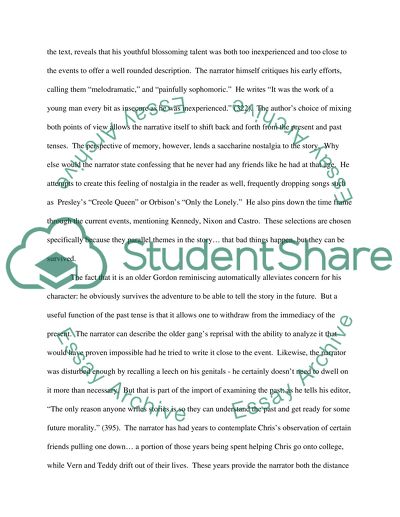Cite this document
(“The Craft of Storytelling through Memory Essay Example | Topics and Well Written Essays - 1250 words”, n.d.)
The Craft of Storytelling through Memory Essay Example | Topics and Well Written Essays - 1250 words. Retrieved from https://studentshare.org/literature/1500298-the-craft-of-storytelling-through-memory-in-stephen-kings-novella-the-body
The Craft of Storytelling through Memory Essay Example | Topics and Well Written Essays - 1250 words. Retrieved from https://studentshare.org/literature/1500298-the-craft-of-storytelling-through-memory-in-stephen-kings-novella-the-body
(The Craft of Storytelling through Memory Essay Example | Topics and Well Written Essays - 1250 Words)
The Craft of Storytelling through Memory Essay Example | Topics and Well Written Essays - 1250 Words. https://studentshare.org/literature/1500298-the-craft-of-storytelling-through-memory-in-stephen-kings-novella-the-body.
The Craft of Storytelling through Memory Essay Example | Topics and Well Written Essays - 1250 Words. https://studentshare.org/literature/1500298-the-craft-of-storytelling-through-memory-in-stephen-kings-novella-the-body.
“The Craft of Storytelling through Memory Essay Example | Topics and Well Written Essays - 1250 Words”, n.d. https://studentshare.org/literature/1500298-the-craft-of-storytelling-through-memory-in-stephen-kings-novella-the-body.


